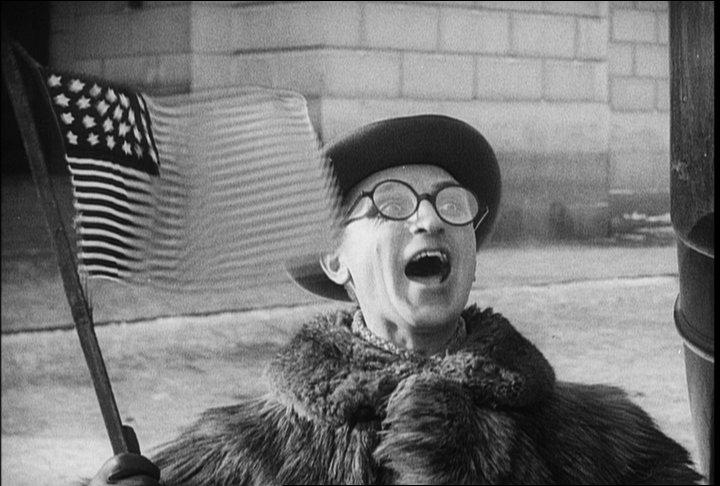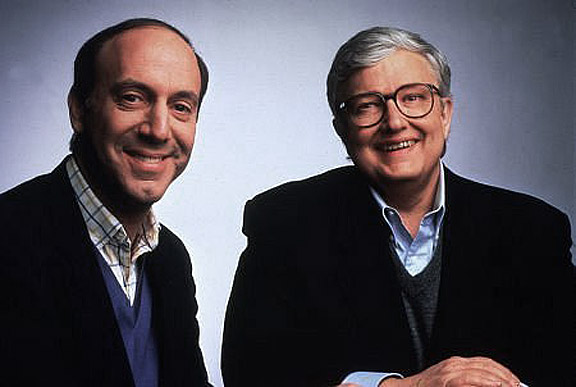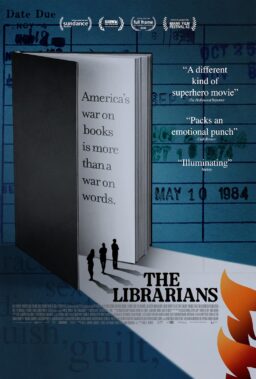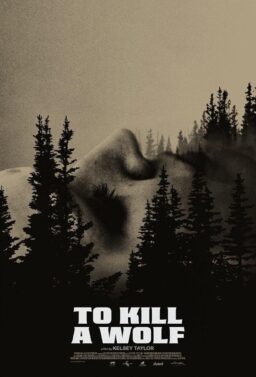Russian villains have been terrorizing Americans onscreen with regularity since World War II; the KGB officers, ex-KGB officers, gangsters and scientists are all deeply familiar stereotypes in the Hollywood canon. Russian and Soviet cinema is no different; in their films Americans are either morally deplorable or totally naive, and always filthy rich. During the Cold War the ideological basis of these depictions was clear; it was a battle for the hearts and minds of each nation’s population. Cinema was an effective weapon. The ideological battle between America and Russia has gone largely under the radar in recent years, but it certainly didn’t end with the fall of the Iron Curtain. Even two short years ago the scale of Russian intervention in the 2016 U.S. Presidential Election would have sounded as far-fetched as the plot outline of a dystopian Soviet-invasion film from the early 1980s. To understand our current political climate, let’s study where we’ve been, by revisiting the rich cadre of Cold War films in our collective cultural archives.
As early as 1924, Lev Kuleshov’s satirical Soviet slapstick “The Extraordinary Adventures of Mr. West in the Land of the Bolsheviks” [pictured above] touched upon how pervasive cultural stereotypes could be in shaping public opinion. An American millionaire, Mr. West, makes a trip to the Soviet Union. He travels with a stack of magazines from New York describing the dangerous Bolshevik “beasts.” Frightened of what he will encounter, Mr. West brings along a trigger-happy cowboy, Jed, as his bodyguard. Inevitably, the two get separated and Mr. West is taken in by a band of thieves who are out to “take him for every penny.” To keep Mr. West under their influence, the thieves reassure him that everything he read about the dangerous Bolsheviks is true, all the while orchestrating various scenarios to extract more and more money from him. At the end of the film, Mr. West is rescued by his trusty sidekick and a “real” Bolshevik police officer. Together they go to an orderly Bolshevik parade in Red Square. In the final scene Mr. West sends a message home, telling his wife to throw away the magazines from New York and put up a photo of Lenin in his study. Mr. West, waving a small American flag and carrying more luggage than he can keep track of, is portrayed as gullible, naive and a sucker for flattery. Mr. West is not the only American millionaire to grace the Soviet screen, though later on his naivete is augmented by more sinister character flaws.
Almost always depicted with a cigar and tuxedo, the American millionaire is the subject of many short Soviet animations from later periods. There is the shady businessman in the “Shooting Range” (1979, 19 minutes, directed by Vladimir Tarasov) who takes advantage of the unemployment crisis to lure young people to work in his shooting range. Outside he advertises “real human targets” and charges double the admission fee. “Mister Twister” (1963- 15m, Directed by Anatoly Karanovich) is based on a popular Soviet children’s rhyme that tells the story of the millionaire from Chicago who goes with his wife and daughter on a trip to St. Petersburg. Mr. Twister is outraged to discover that an African is staying at his hotel. The concierge conspires with all the other hotels in the city to teach him a lesson of multiculturalism that he won’t soon forget.

Perhaps one of the quintessential, and more scathing, depictions of the American millionaire can be found in the short “The Millionaire,” a nine-minute animation by Vitold Bordzilovsky and Yuri Prytkov from 1963. The story follows a bulldog who inherits a large fortune from his wealthy mistress. The bulldog, dressed in a tuxedo, lives on 5th Avenue and dines only on the finest meats. He has his own coiffure, spa treatments and goes to fancy clubs where people start dancing like dogs to emulate him. The millionaire goes home tipsy, and pees on a police officer’s leg as the police officer salutes him. He hangs out with bankers and together they all bark at peace protestors on the streets below. The bulldog millionaire gives his opinions to the newspapers on all matters, regardless of knowledge or authority, and eventually is elected to Congress.
While absurdist, there is something that rings inherently true about these Soviet depictions of life in the United States. The pervasive themes of income inequality, infatuation with wealth (and what the wealthy are able to get away with), high unemployment rates and racism show up again and again in these films. It is propaganda to be sure, but the work also hits succinctly and deeply upon the darkest marks on American society. In “Black and White” by Leonid Amalrik and Ivan Ivanov-Vano, the legacy of slavery that led to mass incarceration and executions of African American men is poignantly addressed in an abstract animation that accompanies the music of Paul Robeson’s “Sometimes I Feel Like a Motherless Child.” The film was made in 1933 and is only two minutes long, but sadly its commentary cuts just as deep today. It wasn’t only the moral shortcomings of American society that the Soviet production companies were watching, but also our pop culture. A number of American novels, mainly political corruption thrillers, were adapted into movies and TV mini-series in the USSR. One such example is the “R Document” by Irving Wallace (1976), a novel about a corrupt FBI director who is trying to instate a 35th Amendment that would allow the Commander in Chief to suspend the Bill of Rights and establish martial law in times of national crisis.
All of this reveals how, since its inception, the Soviet Union has kept a keen eye on what is going on in the United States. Through their cinema, they were able to exploit the weaknesses of American society to help further their own government’s ideological goals and keep their population in check. Yes, perhaps Americans had blue jeans and fancy cars, but its wealth was built on a legacy of racism, slavery and exploitation of the working class. Americans were rarely depicted as physically threatening to the USSR, the state run production companies seemed to understand that they were not in any physical danger from the west. Instead, it was the lure of material goods and glamour that accompanied the capitalist system that was the force to be reckoned with, so it’s natural that they chose to highlight the darker side of our opulent wealth.

American films of the same period took a different approach. The Soviet threat was embodied in a more direct and very physical way. Aside from the slew of films warning of nuclear attack, from the early 1950s all the way into the 1980s American cinema also developed a fascination with the Soviet invasion narrative. In “Invasion USA” (1952, directed by Alfred E. Green), a group of New Yorkers sit in a bar as they see on the television screen that Soviet forces launched an air invasion from Alaska wearing American military uniforms. The rest of the film is pure B-movie propaganda. With a newsreel aesthetic, the film follows the demise of each character at Soviet hands. Bombs drop from airplanes and military bases and factories come under fire by invading forces. As an Atom bomb drops over the city, one character says to another, “It’s hard to imagine isn’t it? That it’s happening to us?” The gimmick of the film is that everyone in the bar has been hypnotized by a man who can see the future. “So it isn’t really going to happen?” one factory owner asks the hypnotist after their collective vision. “It is,” the hypnotist replies, “unless you do something to stop it. Tomorrow springs from today like water from a rock. If you want to change what you will become, first change what you are.” Everyone in the bar leaves inspired to change, to be better Americans. The film ends with a quote from George Washington, “To be prepared for war is one of the most effectual means of preserving peace.”
This theme of preparation, both moral and physical, appears in later films as well. “Red Dawn,” John Milius’ 1984 Soviet invasion film, follows a group of rural high schoolers who take to the hills after a mix of Russian and Latin American communists occupy their region. Patrick Swayze, the leader of the gang, (and incidentally also named Jed, like Mr. West’s Cowboy), was raised by a tough father who made him and his younger brother learn to hunt and survive on their own, in true survivalist fashion. “Don’t cry,” Patrick Swayze yells to one of the younger boys, “let it turn to something else!” And sure enough, it does. The pack of teenagers, now going by the name “Wolverines” after their high school mascot, drive off the communist threat.

Another classic invasion narrative is the long-forgotten 1987 mini-series “Amerika,” directed by Donald Wrye. “Amerika” follows a cast of characters in a soviet-occupied America of the late 1990s. At one point a Russian official tells a local American who is cooperating with the takeover, “You lost your country long before we ever got here.” In all of these stories the focus is on America and American values, when these values of self-reliance, preparation and resourcefulness falter, America falls. In the 1980s America was experiencing a boom of wealth, the commercialism and excess reached new heights that of course did not include anyone. These films were an anthem to remind America what it was made of.
Hollywood may have embodied the Soviet threat in the physical form of invading armies, but characterization of Soviets rarely transcended the brutish Bolshevik beasts in Mr. West’s New York magazines; think the cartoonish standard issue Bond villains, and actual cartoons Boris and Natasha from “The Rocky and Bullwinkle Show”- superficial clichés that reflect no complex understanding of the “enemy.” The pervading stereotypes are a steely determination and callousness honed with scientific precision. A prime example is the training sequence in “Rocky IV” (Sylvester Stallone, 1985). In parallel montage we see the two boxers prepare for the match. As Rocky runs up snowy mountains and lifts bags of rocks and helps peasants pick up their overturned carts, Drago, his opponent, trains on state of the art machines in red laser lighting under the watchful eyes of a fleet of scientists monitoring and evaluating the progress of his every move. Guess who wins?

“Red Heat,” Walter Hill’s 1988 comedy pairs Jim Belushi’s Chicago cop with a soviet police officer, Captain Ivan Danko, played by Arnold Schwarzenegger. The films offers similar characterization of the Soviet captain, with an added layer of tenderness and friendship that grows between the two men. Throughout the film Schwarzenegger expresses a singular and cold hearted pursuit of his mission. At one point in the final battle scene, Belushi says, “I give up, this whole thing is very Russian,” stepping aside to let his friend finish off the Georgian bad guy. At the end of the film the two watch baseball on TV while waiting for the plane to take Schwarzenegger back to Moscow. Schwarzenegger says, “I do not understand this sport.” “You’re not supposed to, it’s totally American,” Belushi replies, “You should stick to things that you’re good at. You know, like knee dancing, training those cute little bears for the circus.” Schwarzenegger looks almost hurt, “We play baseball now in the Soviet Union.” Belushi is incredulous, “Give me a break, will ya? You haven’t got a shot. This is our national past time. Forget it.” After a long pause, he muses, “It would be a helluva World Series though, wouldn’t it?” Schwarzenegger looks off into the distance, “We will win,” he says with total confidence. Belushi gives him an uncomfortable sideways glance that says he believes him too before changing the subject.
Many films of the late 1980s, like “Red Heat” or John Landis’ “Spies Like Us,” had a recurring theme of friendship between Russians and their American counterparts. Camaraderie (or romance) develops in spite of the larger political climate. After the dissolution of the USSR however, Hollywood quickly resumed perpetuating its familiar trope of Russian bad guys. Soviet soldiers became gangsters and disgruntled ex-KGB officers, the characterization and ultimate mission stayed largely the same, only their function in society had transformed. In “Air Force One” (1997), the Vice President played by Glenn Close, asks Gary Oldman’s Russian hijacker what he wants, “When Mother Russia become one great nation again, when the capitalists are dragged out of the Kremlin and shot in the streets, when our enemies run and hide in fear at the mention of our names and the America begs our forgiveness- on that great day of deliverance, you will know what I want.” Though the Cold War was supposedly over, Russian film characters were still fighting an ideological battle long after America thought it had already won. In Phillip Noyce’s Angelina Jolie vehicle “Salt” (2010), the plot revolves around Russian sleeper agents ready to overthrow the American government. The popular TV show, “The Americans” (2013-present), takes place in the 1980s, but also centers around Soviet spies who “pass” as real Americans while they work for Mother Russia. Just as films from the Soviet Union revealed deep truths about American society, we are learning now that some of these popular Hollywood plotlines also reflect truths about Russia worth bearing in our new political climate: they play the long game and are in it to win.
To see Emma Piper-Burket’s Fandor playlist of some of these films and more, click here.











